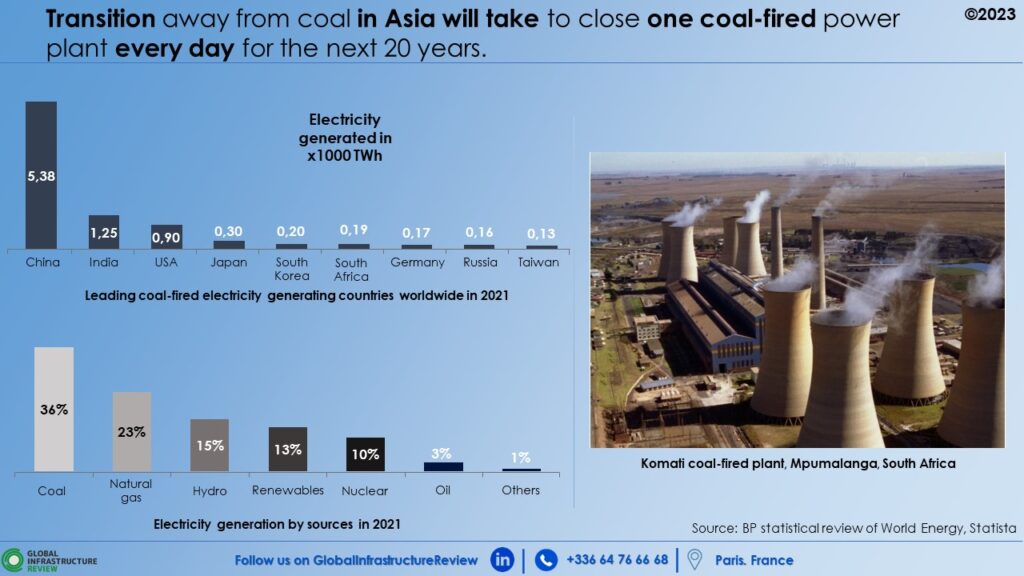In 2021, coal accounted for 36% of the world’s electricity generation, the largest share with Asia being the region that uses the most coal-fired power plants for electricity generation.
China, India and the United States were the leading coal-fired power producers in 2021 (according to Statista).
Although coal is the most CO2-emitting source of electricity generation, the transition from coal-fired power plants to greener sources of electricity is challenging for several reasons.
– Many countries have a high dependence on coal in their electricity mix, up to 60-70% in some countries (South Africa, China, India).
– For Asia to fully move away from coal, it will need to close one coal-fired power plant every day for the next 20 years.
This is a huge ambition and increases the need to understand what the transition away from coal looks like.
According to Axel Van Trotsenburg from the World Bank, who was asked the question at the last COP27, three elements are essential:
– Firstly, the decommissioning of existing coal-fired power plants must be planned and executed.
– Secondly, these coal-fired power plants must be replaced by renewable energy sources after decommissioning.
– Finally, it is critical to ensure that the communities affected have an alternative to maintain electricity security
Successful examples of the transition away from coal include the Komati power station, whose decommissioning project was initiated by the South African government with support from the World Bank and multilateral partners. Some information about the plant is outlined below:

– Location: Mpumalanga/South Africa
– Commissioning date: 1961
– Installed capacity: 1000 MW
– Owner/operator: ESKOM
– Decommissioning date: 2022
The complexity of this project lies in convincing the communities in the affected regions to accept the known short-term risk of the decommissioning project for a certain and secure long-term future.
It is therefore necessary to put in place an inclusive process that integrates the different communities. Indeed, the success of such a project depends on how people will be with you and understand what you are doing. So phasing is very important, providing information is essential and participation is even more important.
Today, the decommissioning of the Komati coal-fired power plant is considered a good prototype that could serve as a guide for the transition ambitions of other coal-fired plants.